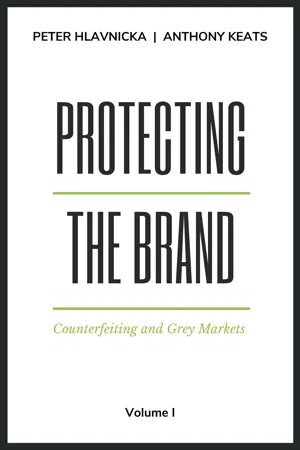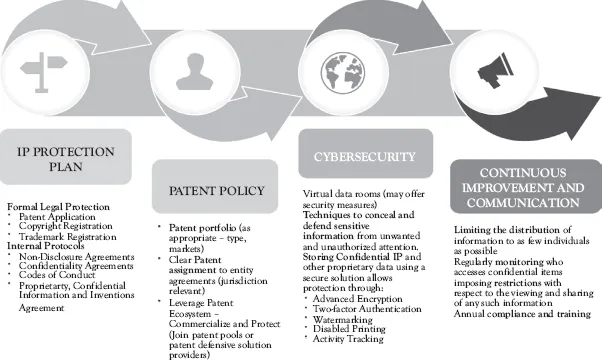
Protecting the Brand, Volume I
Counterfeiting and Grey Markets
- 350 pages
- English
- ePUB (mobile friendly)
- Available on iOS & Android
About this book
Protecting the Brand, Volume I: Counterfeiting and Grey Markets is a handbook for law practitioners as well as business executives.
It is a unique perspective of best practices in addressing issues around counterfeiting and grey markets - from a legal as well as a business point of view. The authors explore the threats posed by counterfeiting and grey markets to a variety of industries and illuminate what problems these may cause. Before setting forth the range of legal strategies for remedying incidents of counterfeiting and grey markets, the authors outline preventive measures businesses can take to combat the threats, and showcase some of the emerging technologies that can serve as enablers of Brand Protection's 3 IPR's (3 I's= Intelligence, Investigation, Innovation; 3 P's= Protection, Perseverance, Perpetuation; 3 R's= Remedy, Recovery, Rehabilitation).
Frequently asked questions
- Essential is ideal for learners and professionals who enjoy exploring a wide range of subjects. Access the Essential Library with 800,000+ trusted titles and best-sellers across business, personal growth, and the humanities. Includes unlimited reading time and Standard Read Aloud voice.
- Complete: Perfect for advanced learners and researchers needing full, unrestricted access. Unlock 1.4M+ books across hundreds of subjects, including academic and specialized titles. The Complete Plan also includes advanced features like Premium Read Aloud and Research Assistant.
Please note we cannot support devices running on iOS 13 and Android 7 or earlier. Learn more about using the app.
Information

Table of contents
- Cover
- Half-Title Page
- Title Page
- Copyright
- Description
- Contents
- Testimonials
- Preface
- Acknowledgments
- Chapter 1 Introduction of Intellectual Property
- Chapter 2 What Is a Brand and Why Protect It?
- Chapter 3 Problems Caused by Counterfeit and Grey Market Goods
- Chapter 4 Incidents of Counterfeiting and Grey Marketing in Various Industries
- Chapter 5 Proactive Internal Procedures to Combat Counterfeiting and the Grey Market
- Chapter 6 Trademark Infringement: Diminishing the Value of Brand Equity
- Chapter 7 International Trade Commission and U.S. Customs and Border Protection, the Lanham Act and the Tariff Act
- Chapter 8 Issues Relating to Websites
- Chapter 9 New Technologies and Alternative Methods to Combat Counterfeiting and Grey Market
- Chapter 10 International Remedies
- About the Authors
- Index
- Backcover